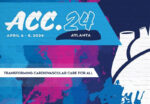Coronary artery disease is common among patients considered for transcatheter aortic valve implantation (TAVI). With the expansion of the indication for TAVI to a population with lower surgical risk, and therefore younger, there has been a gradual increase in the incidence of coronary events. However, there is limited data on treatment strategy and outcomes in<a href="https://solaci.org/en/2024/05/04/acute-myocardial-infarction-after-tavi-retrospective-analysis-of-200000-implants/" title="Read more" >...</a>
Treatment of Recurrent In-Stent Restenosis with Drug-Eluting Stents: 10-Year Outcomes
In-stent restenosis (ISR) remains the main limitation in the percutaneous treatment of coronary artery disease, with a prevalence between 5% and 10% after implantation of latest-generation drug-eluting stents (DES). Therapeutic recommendations for it include the implantation of a new DES and the use of drug-coated balloons (DCB). The rate of recurrent ISR ranges from 10%<a href="https://solaci.org/en/2024/04/29/treatment-of-recurrent-in-stent-restenosis-with-drug-eluting-stents-10-year-outcomes/" title="Read more" >...</a>
ERCTO Registry: Chronic Total Occlusion Treatment Outcomes
Chronic total occlusion (CTO) affect up to 20% of patients undergoing angiographic diagnostic tests. During the last two decades, recanalization technique refinement, the development of specific devices and operator skill improvement have elevated procedural success rate up to 90%. However, there are still particular complications such as collateral perforation and access site complications. This is<a href="https://solaci.org/en/2024/04/25/ercto-registry-chronic-total-occlusion-treatment-outcomes/" title="Read more" >...</a>
EXCEL Study: Complete vs. Incomplete Revascularization
Regardless of whether it is attempted through percutaneous coronary intervention (PCI) or myocardial revascularization surgery (MRS), complete revascularization (CR) is not always achieved. Overall, it is more frequent with surgery than with percutaneous treatment. Additionally, incomplete revascularization (IR) has proven to be associated with worse outcomes compared to CR. Researchers conducted an analysis of the<a href="https://solaci.org/en/2024/04/24/excel-study-complete-vs-incomplete-revascularization/" title="Read more" >...</a>
Peripheral Vascular Disease: Our Reality in Latin America, with the LATAM SOLACI Peripheral Registry
On the one hand, chronic peripheral vascular disease is on the rise. On the other, over the past 20 years, percutaneous coronary intervention (PCI) has gained considerable ground thanks to various new devices, replacing surgery as an alternative in most scenarios. Both strategies have shown similar results, but PCI has fewer complications and shorter hospital stays.<a href="https://solaci.org/en/2024/04/18/peripheral-vascular-disease-our-reality-in-latin-america-with-the-latam-solaci-peripheral-registry/" title="Read more" >...</a>
ACC 2024 | IVUS-DCB
Drug-coated balloons (DCB) have proven to be effective in the treatment of femoropopliteal pathology, although they entail complications such as recoil, residual stenosis, and dissection. Their outcomes could be improved through proper and enhanced vessel preparation, both before and after the procedure. Intravascular ultrasound (IVUS) offers the advantage of characterizing plaque and assessing vessel diameter.<a href="https://solaci.org/en/2024/04/17/acc-2024-ivus-dcb-3/" title="Read more" >...</a>
ACC 2024 | REDUCE AMI: Beta-Blockers after Myocardial Infarction and Preserved Ejection Fraction
Most clinical trials have shown benefits of beta blockers after acute myocardial infraction, including patients with extensive AMI, and these were carried out in the era before AMI was diagnosed with biomarkers and prior to treatment with coronary angioplasty, use of antithrombotic agents and high intensity statins, and angiotensin-aldosterone system inhibitors. The aim of this<a href="https://solaci.org/en/2024/04/16/acc-2024-reduce-ami-beta-blockers-after-myocardial-infarction-and-preserved-ejection-fraction/" title="Read more" >...</a>
Lithotripsy in the “Real World”: REPLICA EPIC-18 Study
Severe persistent calcification of the coronary arteries has been associated with different factors, such as advanced age, hypertension, dyslipidemia, smoking, and kidney failure, among others, and continues to be one of the challenges to stent implantation because of it impact on device advancing, drug release and adequate positioning. Intravascular lithotripsy (IVL) is a technique that<a href="https://solaci.org/en/2024/04/05/lithotripsy-in-the-real-world-replica-epic-18-study/" title="Read more" >...</a>
Should We Use Ultrasound Routinely to Guide Transfemoral Access?
Currently, transfemoral access (TFA) is used in large-caliber procedures and when transradial access fails. The introduction of ultrasound (US) to guide access has emerged as a technique that allows for precise channeling, avoiding accesses above or below the inguinal ligament. However, evidence regarding the use of this tool has shown diverse results. Two surveys conducted<a href="https://solaci.org/en/2024/02/24/should-we-use-ultrasound-routinely-to-guide-transfemoral-access/" title="Read more" >...</a>
Recurrent Revascularization at 10 Years after Percutaneous Treatment of DES In-Stent Restenosis
In stent restenosis (ISR) continues to be the main limitation to the percutaneous treatment of coronary artery disease, with 5 to 10% prevalence after new generation DES stenting. Guideline recommendations for this intervention include new DES stenting and the use of drug coated balloons (DCB). Recurrent ISR stenting rate ranges between 10 and 40%, and<a href="https://solaci.org/en/2024/02/22/recurrent-revascularization-at-10-years-after-percutaneous-treatment-of-des-in-stent-restenosis/" title="Read more" >...</a>








